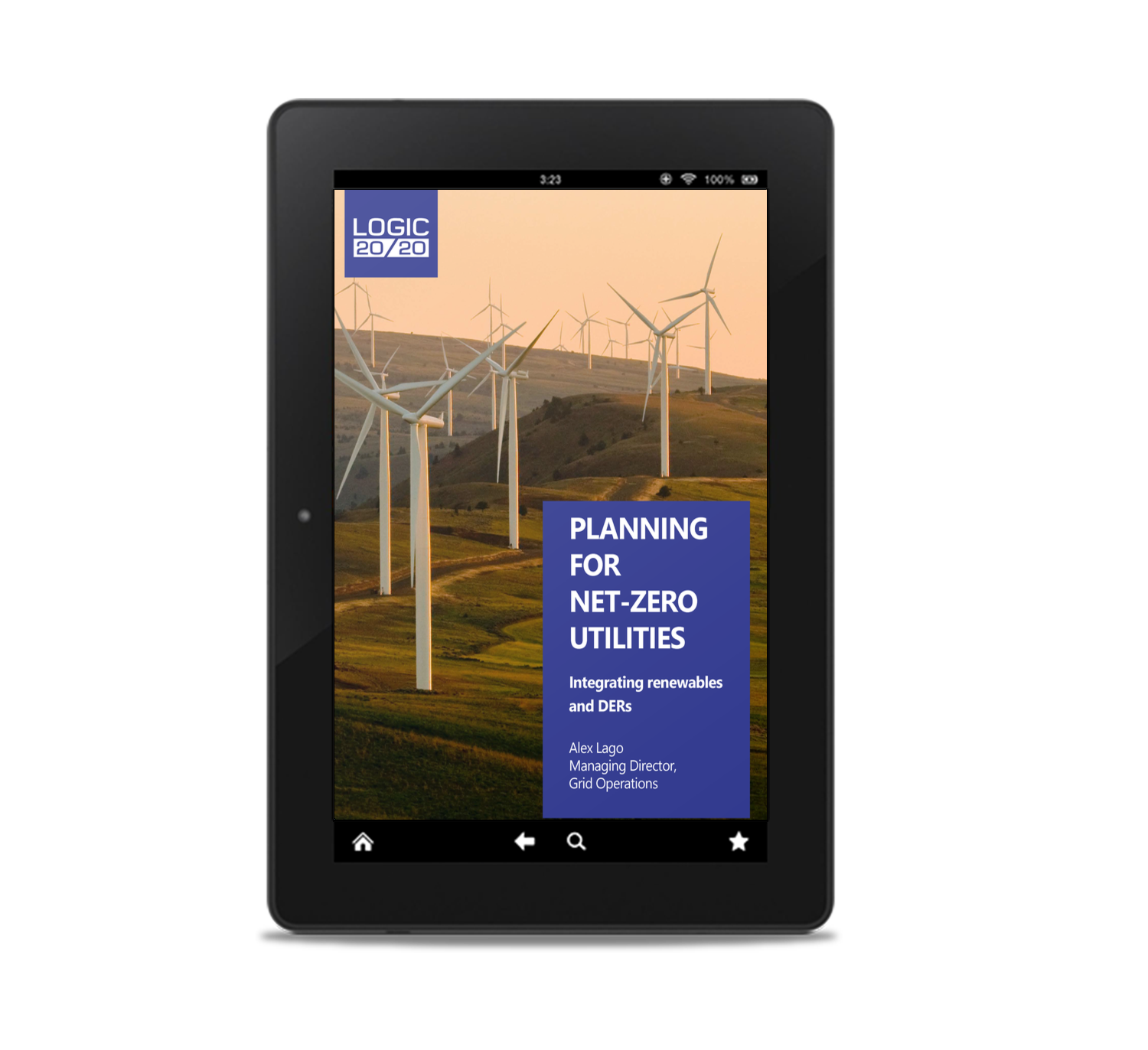Take the first steps towards your utility’s net-zero vision
As pressure intensifies to create a cleaner, greener energy landscape, utilities face the challenge of modernizing their aging infrastructures. This requires integrating renewable energy sources from both consumers and producers while simultaneously maintaining grid safety and resilience.
Download our white paper Planning for net-zero utilities: Integrating renewable energy sources and DERs to learn:
Proven tactics for ensuring more efficient interconnection of renewable energy sources to the grid and DER management
How net-zero goals are driving the industry towards an interconnected future
Grab your copy of Planning for net-zero utilities: Integrating renewable energy sources and DERs

Why integrating renewable energy sources is important
Integrating renewable energy sources is critical for addressing climate change and ensuring a sustainable energy future. The energy sector contributes approximately 75 percent of global greenhouse gas emissions, making it a pivotal area for decarbonization. Transitioning to renewables like solar, wind, and geothermal not only reduces these emissions but also diversifies energy supplies, enhancing grid reliability and resilience.
Renewable energy sources help stabilize electricity costs over time by leveraging resources that are naturally replenished and cost-free, such as sunlight and wind. This shift can reduce consumer energy bills and support energy independence by decreasing reliance on volatile fossil fuel markets. Additionally, investments in renewables foster innovation, create jobs, and contribute to local economies, driving progress toward long-term environmental and economic goals.
For utilities, integrating renewable energy sources is not just a regulatory requirement—it is an operational necessity. A grid powered by renewables offers a flexible and resilient infrastructure that meets growing energy demands while accommodating modern electrification trends, such as electric vehicles and smart technologies. Embracing renewables is an essential step for utilities striving to meet net-zero goals and support a sustainable energy future.
Excerpt from Planning for net-zero utilities: Integrating renewable energy sources and DERs
How utility-scale renewables contribute to net-zero goals
Utility-scale renewable energy sources appear to be ideally positioned to drive progress towards net-zero goals.
The first clear advantage is economy of scale: the levelized cost of utility-scale solar panels, for example, is up to seven times lower per MWh than that of rooftop solar PVs. Utility-scale renewable energy resources are also far easier for grid operators to monitor and control than distributed energy resources owned by consumers, businesses, or independent producers.
Challenges
The fundamental challenge in integrating utility-scale renewable energy sources is that renewable energy plants are typically not dispatchable—they cannot generate power 100 percent of the time when called upon. Weather-dependent sources such as wind and sunlight are inherently variable due to day/night cycles and changes in meteorological conditions.
Solutions
Utilities are developing an array of solutions for addressing the challenges surrounding renewable energy sources, including the following:
- Increasing investment in energy storage
- Installing new transmission lines from high-production to low-production areas, e.g. from desert to city
- Diversifying their renewable energy portfolios among various sources (wind, solar, geothermal, hydroelectric)
- Incentivizing generator flexibility, as California has done by offering a flexible ramping product that rewards generators for the ability to ramp up and ramp down quickly
- Leveraging AI and machine learning to improve forecasting of power generation from renewable energy sources
Regarding solar power specifically, the viability of solar panel farms is limited in states where the climate is cloudy, rainy, or foggy.
Ready for more? Download your copy of Planning for net-zero utilities: Integrating renewable energy sources and DERs today.

